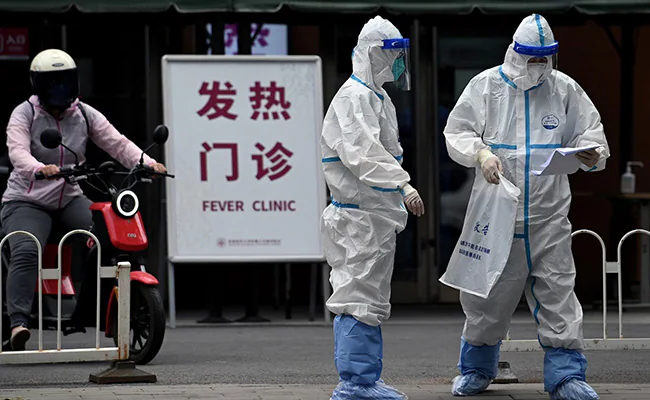Table Of Content
China Pneumonia Outbreak: Latest Updates, Symptoms, Precautions, and Expert Advice
Introduction
In November 2023, a surge in respiratory illnesses, particularly pneumonia, among children in China raised concerns among health officials and the public. The outbreak, dubbed “white lung syndrome” due to the distinctive white patches on chest X-rays of affected children, has prompted investigations into the underlying causes and potential spread.
Latest Updates
As of December 4, 2023, the pneumonia outbreak in China appears to be subsiding. The number of new cases has declined significantly, and hospitals have reported a decrease in admissions for pediatric pneumonia. However, health officials remain vigilant, monitoring the situation closely and advising continued adherence to preventive measures.
Symptoms
The symptoms of pneumonia, including the type seen in the China outbreak, can vary in severity and may resemble those of other respiratory illnesses. Common symptoms include:
- Cough
- Fever
- Shortness of breath
- Chest pain
- Wheezing
- Difficulty breathing
- Fatigue
- Loss of appetite
In some cases, the pneumonia may be accompanied by complications such as pleurisy, an inflammation of the lining around the lungs, or sepsis, a serious bloodstream infection.
Who is at Risk?
Children are particularly susceptible to the pneumonia outbreak, likely due to their developing immune systems. Additionally, individuals with weakened immune systems, such as those with chronic illnesses or undergoing certain medical treatments, may be at increased risk.
Expert Advice
Health experts advise following these precautions to reduce the risk of contracting pneumonia:
-
Frequent handwashing: Wash hands thoroughly with soap and water for at least 20 seconds, especially before eating, after using the restroom, and after blowing your nose, coughing, or sneezing.
-
Respiratory hygiene: Cover your mouth and nose with a tissue or your elbow when coughing or sneezing, and dispose of used tissues properly.
-
Avoid close contact with sick individuals: Stay away from people who are sick, especially those with respiratory infections.
-
Maintain a healthy lifestyle: Eat a balanced diet, get enough sleep, and exercise regularly to boost your immune system.
-
Seek immediate medical attention: If you or your child experiences symptoms of pneumonia, seek medical attention promptly. Early diagnosis and treatment can help prevent complications.
Precautions
In addition to the above recommendations, health officials in China have implemented additional precautions to curb the spread of the pneumonia outbreak. These measures include:
-
School closures: Schools in affected areas have been temporarily closed to reduce the risk of transmission among children.
-
Mask mandates: Masks are mandatory in public places in affected areas to minimize the spread of respiratory droplets.
-
Enhanced sanitation measures: Schools, hospitals, and other public spaces have been instructed to implement enhanced sanitation measures, including frequent cleaning and disinfection.
Impact on the Healthcare System
The pneumonia outbreak has put a strain on the Chinese healthcare system, with hospitals experiencing a surge in admissions and limited resources. However, healthcare workers have demonstrated resilience and dedication in managing the outbreak and providing care to affected children.
Ongoing Investigations
The underlying cause of the pneumonia outbreak remains under investigation. While several pathogens have been identified, including Mycoplasma pneumoniae and respiratory syncytial virus (RSV), the exact cause and contributing factors are still being determined.
International Response
The World Health Organization (WHO) has been monitoring the situation and providing technical support to China. The organization has also emphasized the importance of continued surveillance and preventive measures to prevent the spread of respiratory illnesses.
Conclusion
The China pneumonia outbreak has highlighted the importance of public health measures and the need for early diagnosis and treatment of respiratory infections. While the outbreak appears to be under control, continued vigilance and adherence to preventive measures are crucial to prevent future outbreaks and protect public health.


Leave a Reply